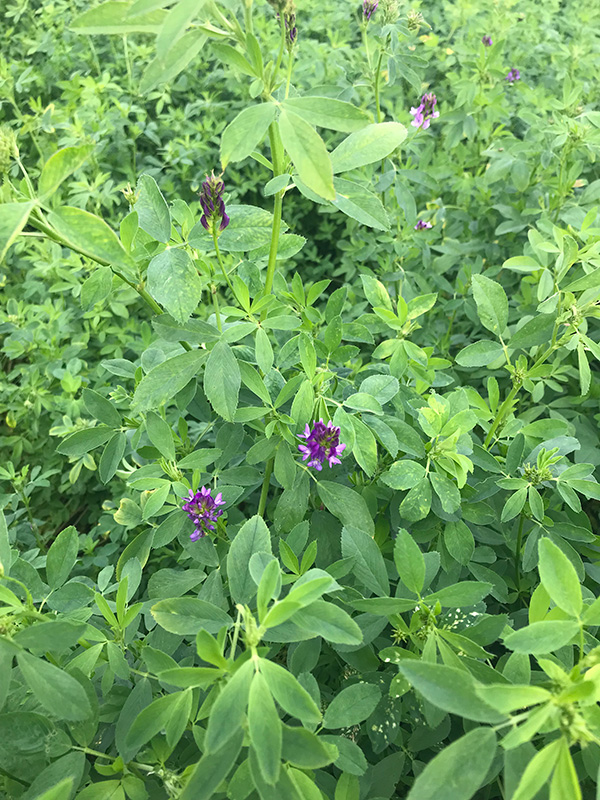Lucerne and the Effect of Auto-toxicity




The extremely dry summer of 2022 highlighted the drought resistance of this deep rooted forage legume. We have seen instances of stands producing 2 to 4 cuts of silage per year during the drought. This proves that on the right soil type, Lucerne really can produce when things dry up!
However this season we have received several enquiries about whether or not you can overseed existing Lucerne stands to either boost the productivity of an older, tired crop, or patch up young crops in which the establishment has been affected by difficult weather conditions or high early weed competition.
The simple answer is no; Lucerne is one species that cannot be oversown with more Lucerne seed to boost the plant population. Lucerne exhibits a trait called autotoxicity which means that the established plant will release chemicals into the soil to inhibit the growth of newly sown seeds.
If you hope to boost a Lucerne stand we suggest using a similar species that has the ability to compete with the existing Lucerne plants, such as Red Clover. This legume is reasonably aggressive during establishment and has a quick regrowth, meaning that it can keep pace with the Lucerne regrowth after a cut is taken.
When adding Red Clover seed, we recommend it is done immediately after the Lucerne has been cut and removed. The seed can be either shallow drilled (no deeper than 1 cm) or broadcast.
It is not recommended to over-seed into a well established crop of Lucerne that has started to naturally come to the end of its life cycle as the autotoxicity will affect both grasses and legumes.
A break of between 5-6 years is recommended between Lucerne crops to prevent autotoxicity from affecting the next crop of Lucerne. It also helps to reduce the likelihood of pest and disease issues associated with the crop.
Sources:
https://www.dlfseeds.com.au/advice/lucerne/growing-lucerne
Date Posted: 2nd April 2025



